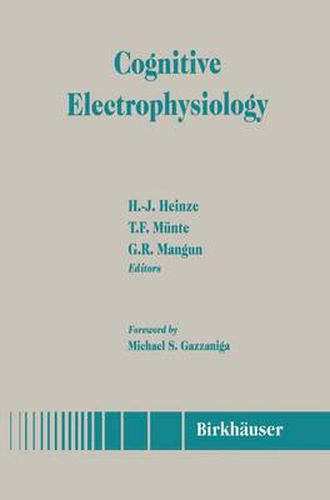Readings Newsletter
Become a Readings Member to make your shopping experience even easier.
Sign in or sign up for free!
You’re not far away from qualifying for FREE standard shipping within Australia
You’ve qualified for FREE standard shipping within Australia
The cart is loading…






This title is printed to order. This book may have been self-published. If so, we cannot guarantee the quality of the content. In the main most books will have gone through the editing process however some may not. We therefore suggest that you be aware of this before ordering this book. If in doubt check either the author or publisher’s details as we are unable to accept any returns unless they are faulty. Please contact us if you have any questions.
MICHAEL S. GAZZANIGA The investigation of the human brain and mind involves a myriad of ap proaches. Cognitive neuroscience has grown out of the appreciation that these approaches have common goals that are separate from other goals in the neural sciences. By identifying cognition as the construct of interest, cognitive neuro science limits the scope of investigation to higher mental functions, while simultaneously tackling the greatest complexity of creation, the human mind. The chapters of this collection have their common thread in cognitive neuroscience. They attack the major cognitive processes using functional stud ies in humans. Indeed, functional measures of human sensation, perception, and cognition are the keystone of much of the neuroscience of cognitive sci ence, and event-related potentials (ERPs) represent a methodological coming of age in the study of the intricate temporal characteristics of cognition. Moreover, as the field of cognitive ERPs has matured, the very nature of physiology has undergone a significant revolution. It is no longer sufficient to describe the physiology of non-human primates; one must consider also the detailed knowledge of human brain function and cognition that is now available from functional studies in humans-including the electrophysiological studies in humans described here. Together with functional imaging of the human brain via positron emission tomography (PET) and functional magnetic resonance imaging (fMRI), ERPs fill our quiver with the arrows required to pierce more than the single neuron, but the networks of cognition.
$9.00 standard shipping within Australia
FREE standard shipping within Australia for orders over $100.00
Express & International shipping calculated at checkout
This title is printed to order. This book may have been self-published. If so, we cannot guarantee the quality of the content. In the main most books will have gone through the editing process however some may not. We therefore suggest that you be aware of this before ordering this book. If in doubt check either the author or publisher’s details as we are unable to accept any returns unless they are faulty. Please contact us if you have any questions.
MICHAEL S. GAZZANIGA The investigation of the human brain and mind involves a myriad of ap proaches. Cognitive neuroscience has grown out of the appreciation that these approaches have common goals that are separate from other goals in the neural sciences. By identifying cognition as the construct of interest, cognitive neuro science limits the scope of investigation to higher mental functions, while simultaneously tackling the greatest complexity of creation, the human mind. The chapters of this collection have their common thread in cognitive neuroscience. They attack the major cognitive processes using functional stud ies in humans. Indeed, functional measures of human sensation, perception, and cognition are the keystone of much of the neuroscience of cognitive sci ence, and event-related potentials (ERPs) represent a methodological coming of age in the study of the intricate temporal characteristics of cognition. Moreover, as the field of cognitive ERPs has matured, the very nature of physiology has undergone a significant revolution. It is no longer sufficient to describe the physiology of non-human primates; one must consider also the detailed knowledge of human brain function and cognition that is now available from functional studies in humans-including the electrophysiological studies in humans described here. Together with functional imaging of the human brain via positron emission tomography (PET) and functional magnetic resonance imaging (fMRI), ERPs fill our quiver with the arrows required to pierce more than the single neuron, but the networks of cognition.